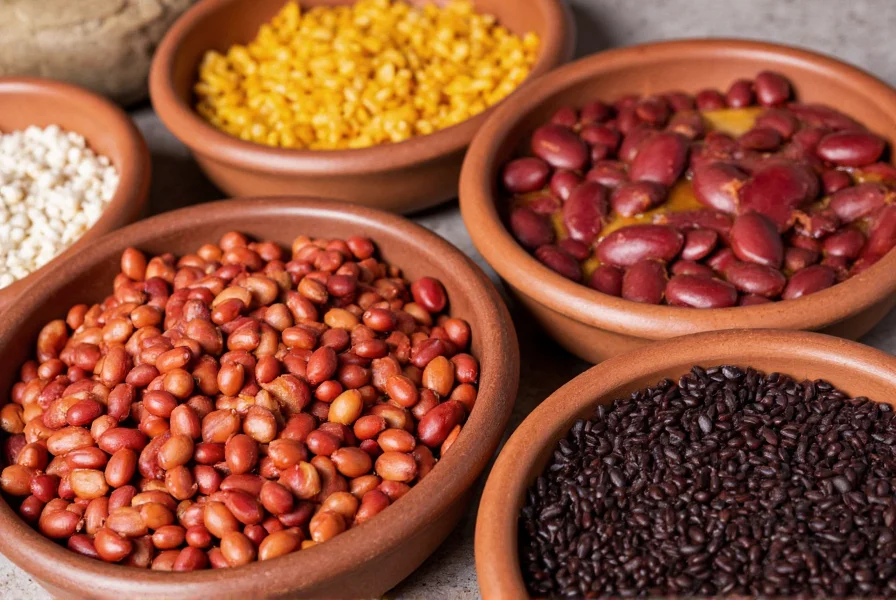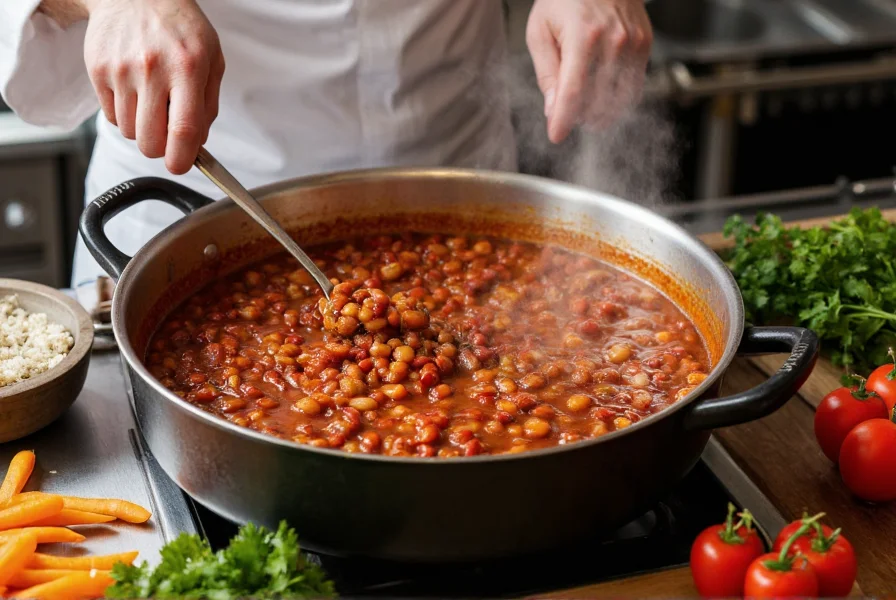Many home cooks mistakenly believe "chili beans" refers to a particular bean species. In reality, this culinary staple represents a flavorful preparation method that transforms ordinary beans into the foundation of authentic chili. Understanding the proper techniques and ingredients can elevate your chili from ordinary to exceptional.
Common Bean Varieties for Authentic Chili
While no single bean qualifies as a "chili bean," certain varieties have become traditional in chili recipes due to their texture, flavor absorption, and cooking properties. The most popular options include:
| Bean Type | Flavor Profile | Texture When Cooked | Best For |
|---|---|---|---|
| Pinto beans | Earthy, mild | Creamy with slight firmness | Traditional Texas-style chili |
| Kidney beans | Robust, meaty | Firm, holds shape well | Cincinnati-style chili |
| Black beans | Sweet, earthy | Firm yet creamy | Southwestern and vegetarian chili |
| Great Northern beans | Mild, nutty | Delicate, creamy | White chili variations |
Nutritional Benefits of Beans in Chili
Beans form the nutritional backbone of any quality chili, providing substantial health benefits that extend far beyond flavor. A single cup of cooked beans typically delivers:
- 15 grams of plant-based protein
- 10-15 grams of dietary fiber
- Significant amounts of iron, magnesium, and folate
- Complex carbohydrates for sustained energy
- Natural compounds with antioxidant properties
Research shows that regular bean consumption correlates with improved heart health, better blood sugar regulation, and increased satiety. When preparing chili beans, these nutritional benefits remain intact when using proper cooking techniques that preserve the beans' natural properties.

Traditional Preparation Methods for Perfect Chili Beans
Authentic chili bean preparation follows time-tested methods that maximize flavor and texture. The process begins long before the beans hit the pot:
Dry Beans vs. Canned: What Professional Chefs Recommend
While canned beans offer convenience, culinary experts consistently recommend starting with dry beans for chili. Properly prepared dry beans deliver superior texture and absorb flavors more effectively. The key steps include:
- Sorting and rinsing: Remove any debris or damaged beans
- Soaking: 8-12 hours in cold water or quick-soak method (boil 2 minutes, then steep 1 hour)
- Cooking: Simmer gently in fresh water with aromatics until tender but not mushy
- Seasoning: Add salt and acidic ingredients like tomatoes only after beans are tender
Avoid adding salt or acidic ingredients too early, as this can prevent beans from softening properly. The traditional Mexican technique of adding a small piece of kombu seaweed during cooking helps improve digestibility while enhancing flavor.
Regional Variations in Chili Bean Preparation
Chili traditions vary significantly across regions, each with distinctive approaches to bean preparation:
- Texas-style: Historically bean-free, but modern interpretations often feature pinto beans cooked separately and added at the end
- New Mexico tradition: Uses smaller red beans that cook quickly and blend seamlessly into the chili
- Cincinnati specialty: Incorporates kidney beans directly into the meat mixture with chocolate and cinnamon
- Vegetarian adaptations: Often combine multiple bean varieties for complex texture and complete protein profile
Common Mistakes When Preparing Chili Beans
Even experienced cooks make these frequent errors that compromise chili quality:
- Adding beans too early, causing them to break down completely
- Using excessive salt during initial cooking phase
- Overcooking beans before incorporating into chili
- Using canned beans without rinsing, resulting in metallic taste
- Adding acidic ingredients before beans are fully tender
Professional chefs recommend cooking beans separately from the chili base, then combining them during the final 30-60 minutes of cooking. This technique preserves bean integrity while allowing flavors to meld properly.

Modern Techniques for Flavorful Chili Beans
Contemporary cooking methods have refined traditional approaches while maintaining authenticity. Pressure cooking has revolutionized bean preparation, reducing cooking time while improving texture. When using an Instant Pot or similar appliance:
- Use a 3:1 water-to-bean ratio
- Add aromatics like onion, garlic, and bay leaves
- Cook on high pressure for 25-30 minutes with natural release
- Season after cooking completes
For those seeking authentic flavor with modern convenience, this method produces perfectly textured beans in a fraction of traditional cooking time while maintaining all nutritional benefits.
Storage and Reheating Tips for Leftover Chili Beans
Proper storage maintains quality and flavor for future meals. Cooked chili beans:
- Keep fresh in the refrigerator for 4-5 days when stored in airtight containers
- Freeze exceptionally well for up to 6 months
- Often taste better the second day as flavors continue to meld
When reheating, add a small amount of liquid to restore moisture, and consider stirring in fresh herbs or a splash of vinegar to brighten flavors that may have mellowed during storage.
FAQs About Chili Beans
Are chili beans and refried beans the same thing?
No, chili beans and refried beans are distinct preparations. Chili beans are whole or partially mashed beans cooked with chili spices and tomatoes, while refried beans are cooked beans that have been mashed and fried, typically without chili ingredients. Refried beans serve as a side dish or component in Mexican cuisine, whereas chili beans form the base of chili recipes.
Can I make chili without beans and still call it chili?
Yes, traditional Texas-style chili often contains no beans, focusing instead on meat and chili peppers. The inclusion of beans varies by regional tradition and personal preference. Authenticity depends more on the chili pepper blend and cooking technique than the presence of beans. Many chili competitions actually prohibit beans in traditional categories.
How do I prevent beans from becoming mushy in chili?
To maintain bean integrity in chili, cook beans separately until just tender, then add them during the final 30-60 minutes of chili preparation. Avoid vigorous boiling once beans are incorporated, and never add acidic ingredients like tomatoes until beans are fully cooked. Using older beans (1-2 years) can also help maintain shape, as fresher beans tend to break down more easily.
What's the best way to season beans for chili?
Season beans after they're fully cooked, as salt and acidic ingredients added too early prevent proper softening. The ideal seasoning approach includes aromatics like onion, garlic, and bay leaves during cooking, then finishing with salt, chili powder, cumin, and oregano after the beans reach desired tenderness. Some chefs recommend adding a small piece of kombu seaweed during cooking for enhanced flavor and digestibility.











 浙公网安备
33010002000092号
浙公网安备
33010002000092号 浙B2-20120091-4
浙B2-20120091-4